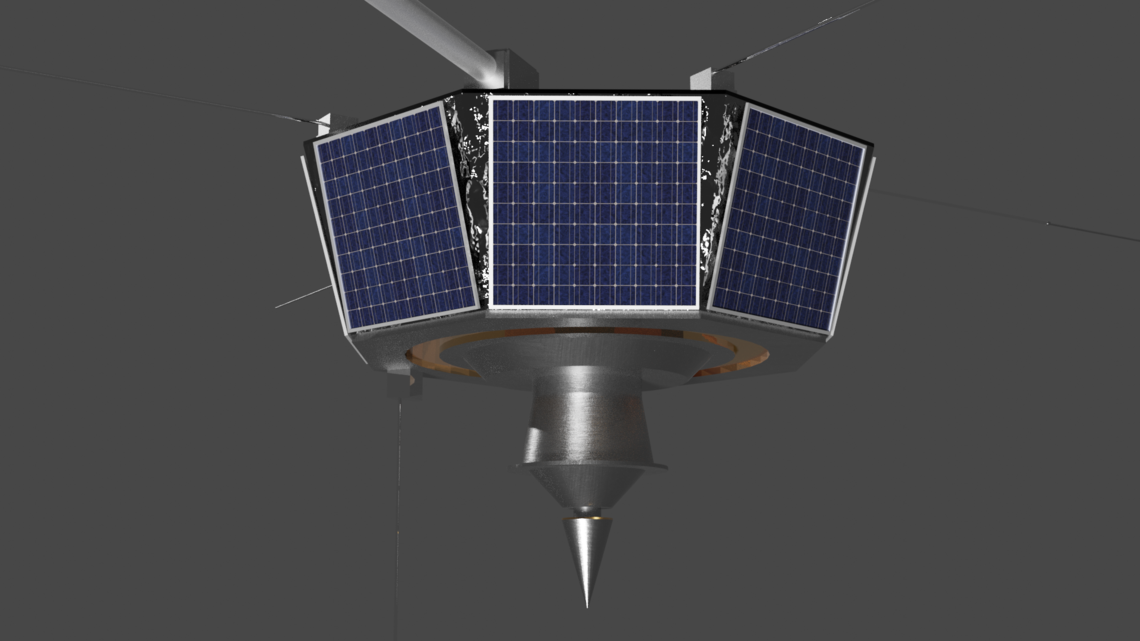Viking Satellite History
Overview
The Viking satellite was the first Swedish satellite project, launched on February 22, 1986. Since the northernmost part of the country reaches auroral zone latitudes, there has been a long tradition of researching aurora in Sweden.
In 1976, the S3-3, the third of the Small Secondary Satellites trio launched by the United States, demonstrated the immense importance of auroral physics in understanding the processes occurring in the 1-2 RE orbit range on high-latitude field lines. The revelations by the S3-3 satellite led to Sweden planning for a satellite project to extend the research done by America’s probe. Considering the advantage that Sweden’s geographical location offers in terms of aurora research, the plan was welcomed. In addition, previous to Viking, the Dynamics Explorer 1 (DE-1) spacecraft had been investigating the high latitude medium. Viking was the third satellite specially designed and equipped to investigate the plasma physical acceleration and other processes in the transition region between hot and cold plasma on auroral latitude magnetic field lines within this region.

Above is a screen capture of a 3D model for the Viking Satellite. To explore the details of the satellite, please click on the Viking Satellite 3D Simulation button.
In the Viking mission, a strong emphasis was placed on improving the resolution in time and space measurements. The bit rate available to the experiments onboard, the frequency/time resolution of the wave experiments and the magnetic field sampling rate were chosen to be considerably higher than the previous spacecraft. As well, the geometrical factors were increased as much as possible. The UV imaging experiment, whose principal investigator was at the University of Calgary, had the ability to take one picture per satellite spin period of 20 seconds with a spatial resolution of 20 km at apogee. The UV cameras onboard Viking made dayside aurora almost as accessible for observations as the nightside aurora are.
Several of the experiments present on the Viking satellite were new or qualitatively different from those on the S3-3 and DE-1 satellites. For example, Viking carried the first satellite-flown plasma wave interferometer. As many experiments’ abilities were increased on the Viking satellite, the energies at which particles were measured were also higher than previously. As well, a three-dimensional drift meter was included for further science.
Arguably the most important of the new features on the Viking satellite was the campaign real-time analysis of data taken by the satellite. There were 7 campaigns that occurred, each spanning approximately 2 weeks. This resulted in the first four months of data collection being for the campaigns. The two main reasons that motivated the idea for these campaigns were Sweden’s extensive experience of sounding rocket campaigns as well as the fact that the spacecraft was in direct sight of the telemetry receivers at Esrange for practically the entire useful part of each orbit. The campaigns were extremely valuable for the project as it enabled fast and effective identification of scientifically interesting phenomena while allowing for the collaboration of all or some of the experiments aboard the spacecraft. Furthermore, the campaigns actively stimulated and educated various age groups of the scientific community about auroral phenomena.
The data retrieved from the Viking project was both extremely rewarding and interesting. Due to the difficulties in observing dayside aurora from the Sun’s interference, the information it provided us was never fully appreciated. With the aid of the UV cameras on Viking, data collection on the dayside portion of the auroral oval was made possible. During solar minimum conditions when Viking was able to take its measurements, the dayside part of the auroral oval was found to be most active except during auroral storms and large substorms. The results demonstrated that there were similar “deformation” processes taking place in dayside auroral forms as there were in nightside aurora (such as the Kelvin-Helmholtz instability). However, not only were there revelations made about the dayside aurora, but further phenomena were uncovered for nightside aurora as well. This included “hot spots” which came and went within minutes and sometimes appeared as pearls on a string for not only the nightside aurora but also the dayside. The Viking satellite also provided new results about the field-aligned acceleration auroral primary electrons into the ionosphere. It confirmed the existence of U-shaped potential distributions and clarified the mechanisms giving rise to the large potential differences along the magnetic field lines. The plasma wave interferometer present on the spacecraft revealed the existence of rarefactive solitary waves, which are believed to be identical to the weak double layers found by the S3-3 satellite. The interferometer made it possible for the first time to understand the characteristic scaled and propagation velocities of these small-scale plasma depletions. Furthermore, Viking passed through the generation region for auroral kilometric radiation (AKR) in approximately 36 of its 1400 revolutions around Earth and revealed new information about AKR generation processes. An early surprise was that the auroral hiss of much lower frequency that is associated with the AKR is frequently more intense than the AKR itself. As well, the Viking satellite was able to provide additional improved quality data on the several wave modes being investigated. Not only were there a large number of ion waves identified, but magnetic field variations of even lower frequencies were detected as well.
